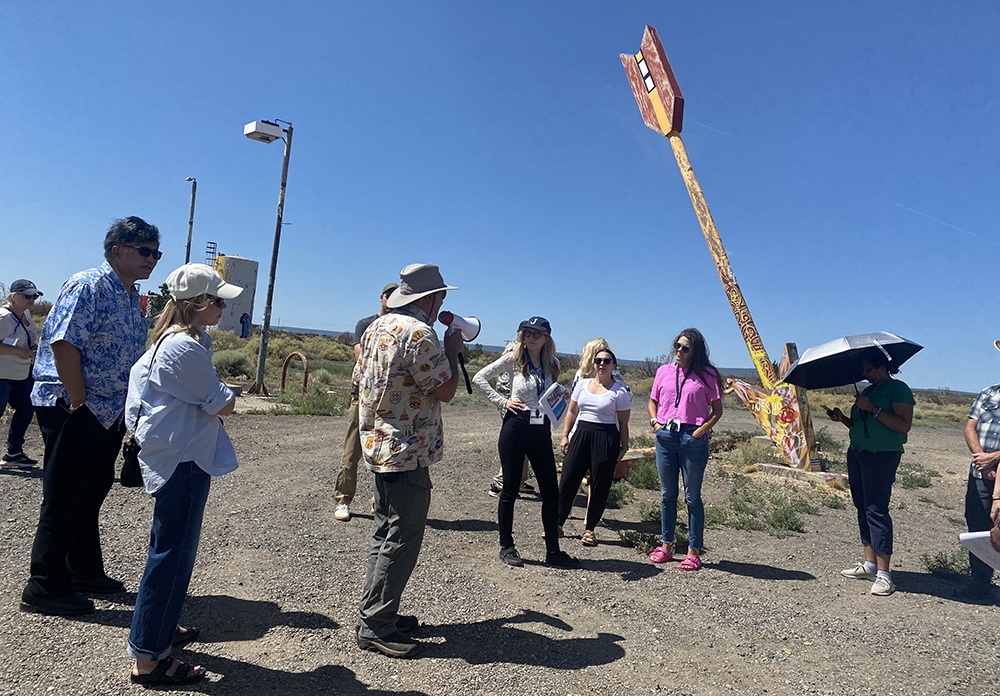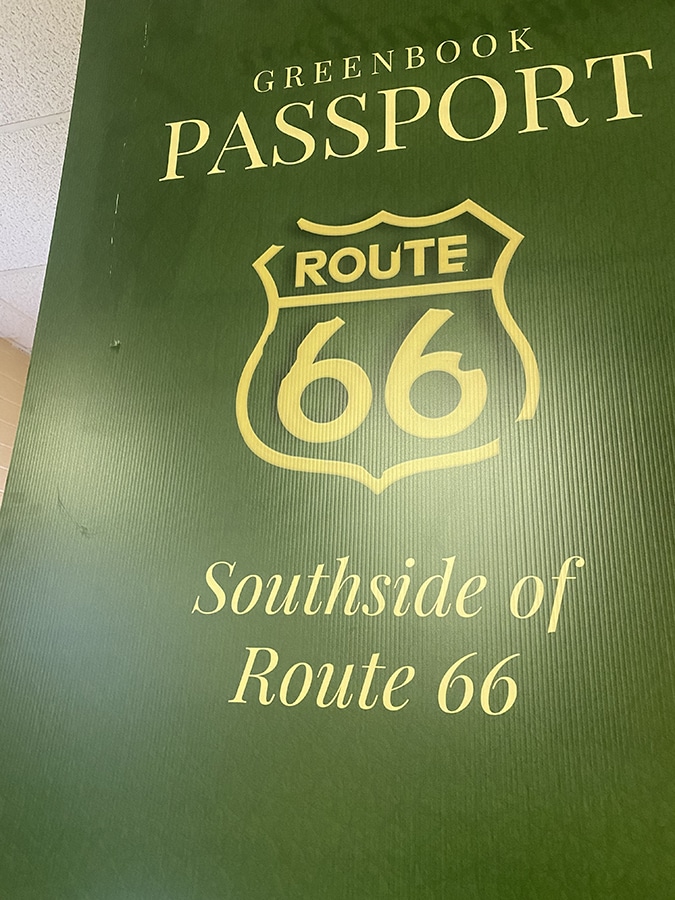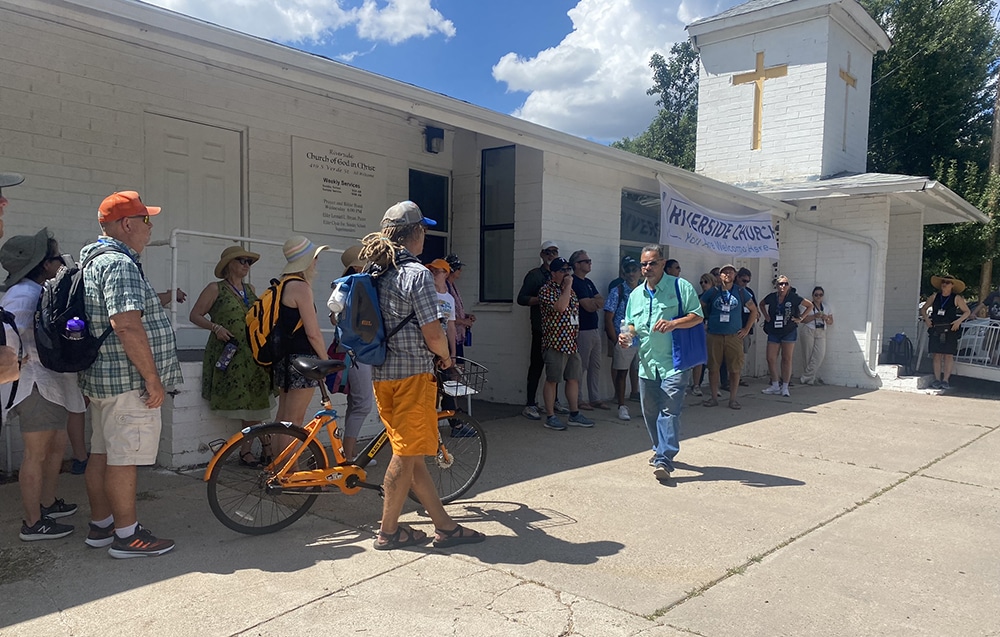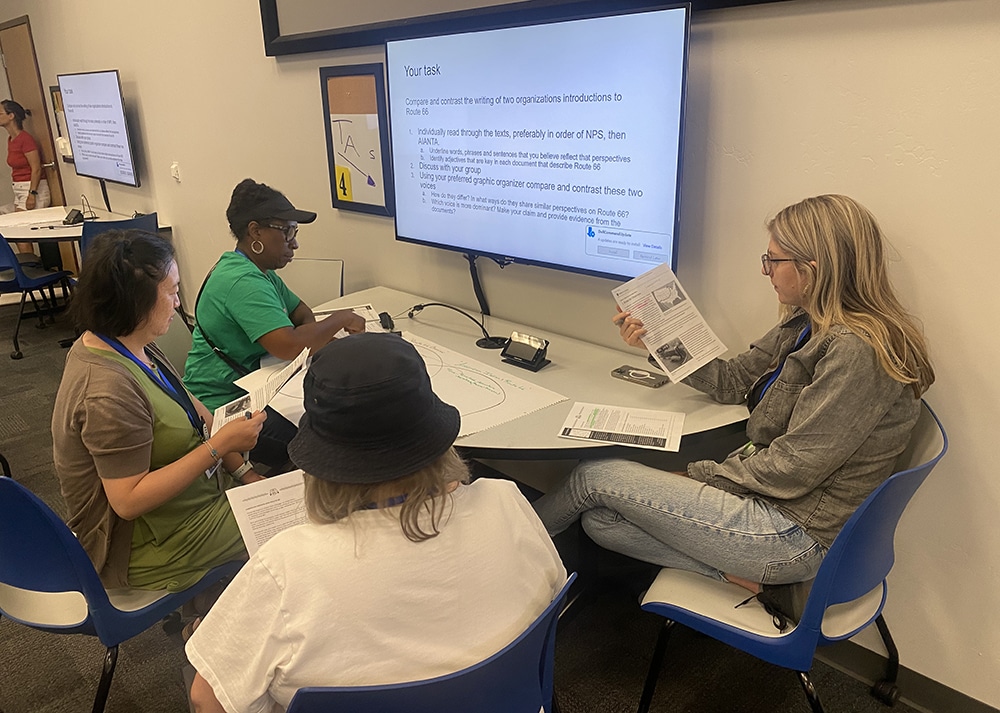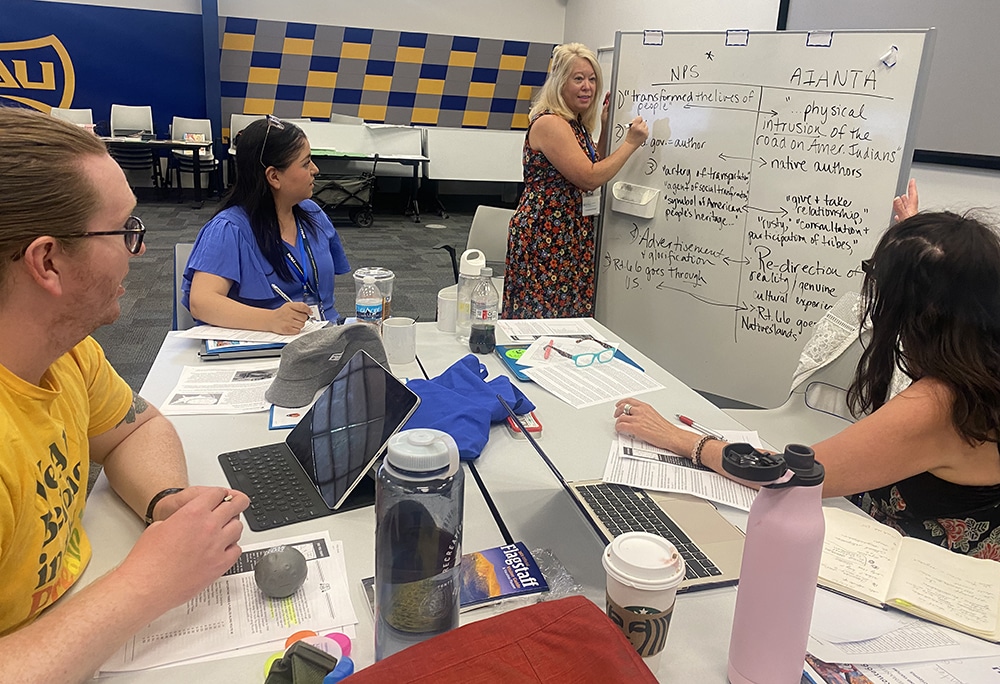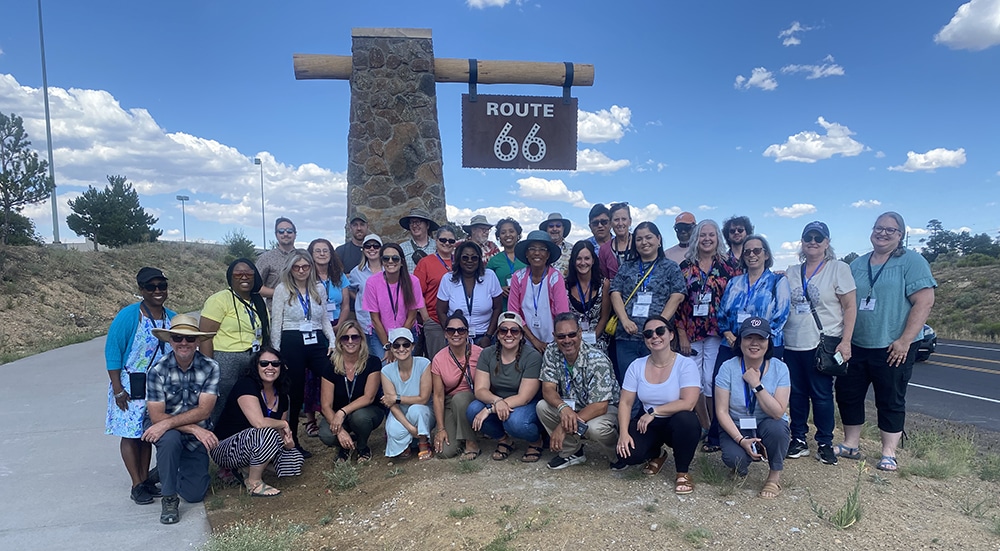More than 60 teachers from throughout the nation spent a week in Flagstaff to delve into the history of race and space of historic Route 66.
As part of Racialized Spaces on Route 66, a project of the National Endowment for the Humanities Landmarks of American History and Culture project, the teachers, librarians, counselors and educators visited historic Green Book and Route 66 sites, heard oral histories from African American, Hispanic/Latinx and Indigenous respondents, discussed best practices in teaching/learning and developed lesson plans that examine Route 66 as the “Mother Road” of community-based stories.
The co-directors, associate professor Gretchen McAllister and former NAU professor Ricardo Guthrie, were joined by Cline Library archivist Sean Evans and Joseph Martin, an associate professor in the Department of Educational Leadership. Other community scholars, including Steven Mandrgoc and David Dunaway, also participated, as did the Road Ahead Foundation and the Historic Route 66 Association of Arizona.
“The focus on the Flagstaff region provides a clear through-line for examining the underrepresented stories and voices that contribute to a more complete image of the Route 66 narrative,” McAllister said.
The City of Flagstaff and surrounding areas near the Navajo Nation contain many extant buildings and historical sites found on Route 66 and in Victor Green’s “Negro Motorists’ Guide” (the Green Book circa 1926-1966), which allowed teachers to visit sites and meet residents who shared “lived experiences” about the Black, Hispanic and Indigenous communities that developed along Route 66.
“We need to be able to help teachers develop strategies for creating lessons that provide room for having complex discussions that reimagine race, space, and reconciliation,” Guthrie said. “Route 66 provides that platform to be able to talk and compare stories that drive our appreciation of history, culture, geography and biography, together.”
The curriculum included lectures and workshops on archival research, a bus tour along the original alignments of Route 66 from Flagstaff to the old Twin Arrows trading post, extensive discussions and workshops, walking tours of Black heritage sites, a Basque Tourist Home and handball court, Route 66 motels and motor lodges and sites of Chinese and Hispanic businesses, which were negatively impacted by the realignment of Route 66 out of the segregated Southside neighborhoods where people of color lived.
Learn more about Racialized Spaces on Route 66.
